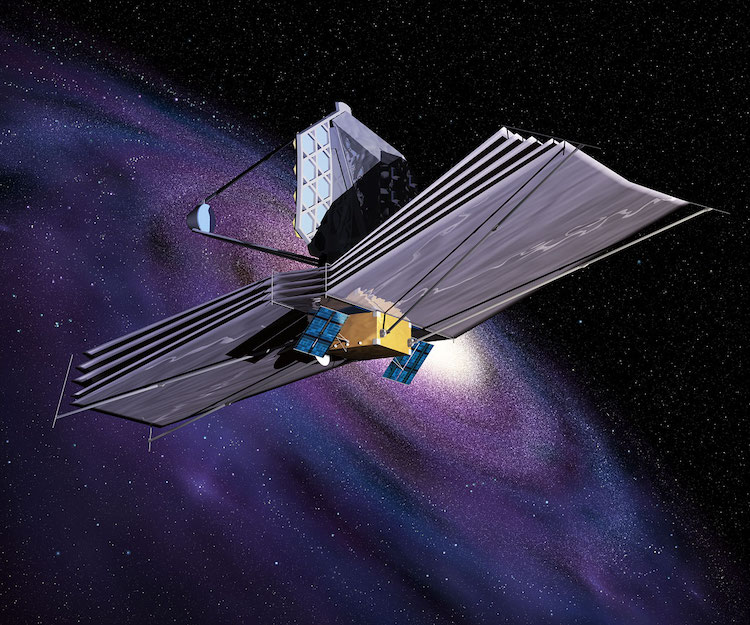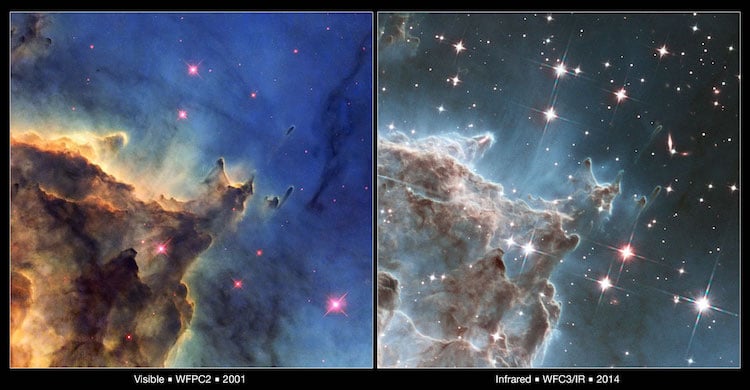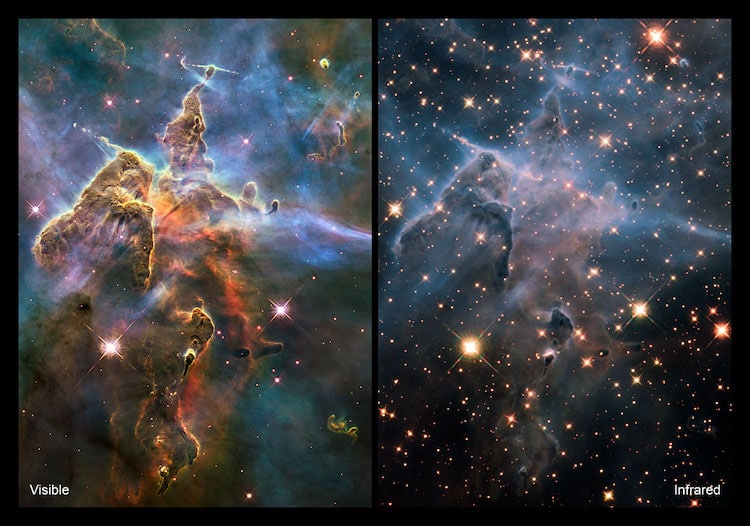
An artist’s impression of the James Webb Space Telescope, successor to the Hubble Space Telescope, after its launch. (Photo: ESA)
A new dawn is emerging in the realm of space exploration and discovery. Ushering in that progress is a new joint NASA, ESA, and CSA space telescope: the James Webb Space Telescope, named after former NASA administrator James E. Webb. Scheduled to launch from the shores of French Guiana in December, it will be the largest and most powerful telescope ever put into space. With a primary mirror covered in gold and measuring 21 feet across, Webb is said to be 100 times more powerful than even the Hubble Space Telescope.
For generations, Hubble Telescope pictures have regaled us with spectacular cosmic landscapes that have allowed us to better understand some of the farthest reaches of our solar system and beyond. And its celestial images have since become iconic. They’ve allowed us a clearer view of space than what was previously possible from below Earth’s atmosphere, which can distort the light traveling from distant stars and planets.
Now, with the help of the James Webb Telescope, we’ll be able to see even further into the corners of the universe. Thought by some to be a replacement for its well-known predecessor, scientists view the new telescope instead as more of a successor, intended to augment and expand upon the discoveries of the Hubble. As their missions overlap, they will jointly provide bewitching views of the cosmos.
“Will Webb images look as gorgeous as Hubble images?” muses Jane Rigby, a NASA astrophysicist on the James Webb team. “Will we love them not just as scientifically valuable, but are they gonna knock our socks off? I’m pretty sure they are.”
Optimized to see near- and mid-infrared light—unlike the Hubble which can primarily detect light visible to the human eye—Webb will be able to view older and colder objects in space. This also allows it to see through dust, which can often obscure stars and other objects in Hubble images. Located about one million miles from earth—more than four times further away than the moon—the powerful telescope will be able to see light that has been traveling for nearly the entire history of the universe.
Due to its massive size, Webb cannot fit into a rocket fully assembled. As a result, its folding 18-segment mirror and tennis court-sized sun shield will need to be unfurled and set up over a period of six months once it arrives at its destination. If these complicated maneuvers go according to plan, then its first images should arrive by sometime next summer. And, according to Rigby, the first images released to the public “are intended to be jaw-droppingly beautiful, powerful, both visually and scientifically.”
The James Webb Space Telescope is currently scheduled to launch from Guiana Space Centre (aka Europe’s Spaceport) on December 18, 2021.
For decades, the Hubble Space Telescope has given us spectacular pictures of outer space.

Two views of the Eagle Nebula’s Pillars of Creation, captured by the Hubble Space Telescope in visible and infrared light. (Photo: NASA, ESA/Hubble and the Hubble Heritage Team)

Two views of the same detailed area in the star-forming nebula NGC 2174 from the Hubble Space Telescope. (Photo: NASA and ESA)

Two images of a pillar of star birth taken in visible and infrared light by the NASA/ESA Hubble Space Telescope, revealing dramatically different and complementary views of the object. (Photo: NASA, ESA, M. Livio and the Hubble 20th Anniversary Team (STScI))
Now the James Webb Space Telescope launch will enable us to see even more detailed space images than we could have ever imagined!

An artist’s impression of the James Webb Space Telescope as it transits in front of the Milky Way. (Photo:ESA)
Watch this video to learn more about the mission of NASA’s newest telescope.
James Webb Space Telescope: Website | Instagram | Facebook | Twitter | YouTube
h/t: [NPR]
Related Articles:
How Galileo and His Telescope Changed Ideas About the Universe
NASA Releases 30 New Space Images for 30th Anniversary of the Hubble Telescope’s Launch
Watch How People React to Seeing the Moon Through a High-Powered Telescope
Astrophotographer Captures Extraordinary Details of Moon’s Surface in 209-Megapixel Photo
